
19 minute read
The lightness of being
Perfect light
Our natural circadian rhythms are affected by light and dark; how well we sleep can influence our entire day’s moods
Advertisement
THE PSYCHOLOGY
EXPOSURE to natural light helps our bodies produce vitamin D, serotonin, and melatonin and can even increase productivity – but it can also have hidden stressors. One of these is glare, which can cause eye strain. At night, do what you can to achieve full darkness. Disrupted sleep can throw off our serotonin levels which, in turn, interrupts mood regulation.
There are people in northern Europe, the US and Canada who suffer from a syndrome called seasonal affective disorder (SAD), a condition characterised by depression which occurs in climates where in autumn and winter there is a considerable drop in levels of sunlight.
We are unlikely to have many cases of SAD in South Africa but even here our moods can be affected by the light. We have all been into rooms flooded with sunshine which boost our mood or south-facing rooms that feel dark and a bit depressing.
If our home is our sanctuary, it needs to be a place where we can relax and recharge. One of the important elements of a supportive space is the right kind of lighting.
In 2014, a Journal of Consumer Psychology study found that the more intense the lighting, the more affected and intense the participants’ emotions were, both positive and negative.
The study included six experiments which examined the link between emotion and ambient brightness. Feelings of warmth increased when participants were exposed to bright light with hints of reddish hues. A sensation of angst increased when bluer light dominated.
The brighter the light, the more intense the participants’ emotions became.
Light also affects our circadian rhythms – the natural cycle of physical, mental and behavioural changes that the body goes through in a 24-hour cycle. These rhythms are mostly affected by light and darkness.
THE HOW TO

Lighting in the home can affect our moods, our sleep and how well we perform various tasks –try chopping an onion when the kitchen counter light is poor.
Here are some top tips to get home lighting right.
Invest in room-darkening curtains or blinds in your
bedroom. Automated curtains are best because you can set them to open and close at certain times. Let the sunshine in – through a window, glass door or skylight. Natural light makes spaces feel bigger and us feel happier. Even on overcast days, north-facing rooms are brighter than south-facing ones, which may need supplementary (and costly) lighting during the day.
Mirrors reflect both natural and artificial light and make a room feel bigger and brighter.
Good lighting improves a home’s functioning. As we get older, we need more light. Try layering your light: ambient light for overall illumination; task lighting such as undercabinet lights in the kitchen for chopping those onions and accent lighting – pops of lighting to brighten a corner or a painting. Choose the right bulb. When it comes to artificial light, most LED light bulbs deliver sharp, bluish hues (which keep us up), so it might be worth replacing them with smart bulbs or any home light bulb labelled “warm white”. Blue/white light makes us energetic and can interrupt sleep patterns, while red and yellow light in the evening can help improve mental health.
Happy to be tech free
Time spent away from electronic devices is an important part of mental health care

WORDS BONNY FOURIE PICTURE RF STUDIO HERE are some tips on how to set up a space with which the family is enchanted enough to stay away from the constant pings of modern-day living.
Step 1 Find a convenient spot. Many people believe the bedroom should be a tech-free space but which ever area you choose, make sure it is a place young people want to be in, even if it means leaving their mobile devices behind or no TV.
Step 2 Have some rules of what is and is not allowed.
Step 3 Find alternative activities. A successful tech-free space must appeal to all our senses. It must be a place to relax and have fun and enable children to do things that interest them. If it does not, they will become bored and want to leave to check their cellphones or watch their favourite series. The more time that children and teens want to spend in these techfree spaces the more they will realise that they can enjoy time without their mobile devices. Step 4 Decorate the space to match the zone. The space should look creative and relaxing. Get your children involved in creating this space. You could even have an art wall painted with chalk paint where they can draw directly on the walls.
IDEAS
Depending on your children’s personalities, these spaces could include: • Books and magazines if they enjoy reading. • Musical instruments that they like, or would like, to play. • Card or board games and puzzles, which the family can do alone, in pairs or in a group. • Toys that may appeal to younger children and their imaginations – and even encourage interaction between family such as building blocks, doll’s houses, drawing materials or objects for pretend play. • Remember when you would put on a play for the adults? Why not have your own mini theatre for kids? Have fun writing a play together and then performing it. • Provide healthy snacks, such as fruit, and maybe hot drinks or juice and water to keep them there and engaged in conversation with others in the room.
Indoor plants help you grow

You’re never alone when you share your space with plants – in your home, on a balcony or even in a few pots on your windowsill
WORDS VIVIEN HORLER AND ALAN SIMMONDS
THE PSYCHOLOGY
HAVE YOU ever felt down and then gone for a walk? You almost always feel better afterwards. That’s because we’re hardwired to be boosted by the beauty of nature. (The fresh air helps too.)
Sadly, we don’t all live near parks or even have gardens. However, house plants, or even a few pots on a balcony, can make us feel better.
House plants boost our mood, productivity, concentration and creativity. They also help reduce stress, fatigue and colds.
The plants clean indoor air by absorbing toxins, increasing humidity and producing oxygen. They add life to a sterile space, give privacy, reduce noise levels and are therapeutic to care for.
Plants have organic, irregular shapes that are inherently relaxing to the eye. And they create a space in which you are never alone.
In between the mayhem of deadlines, indoor gardening teaches you the art of patience.
THE HOW TO
Start with low-maintenance plants, such as aloe, ivy and jade plants. If you’re a more seasoned plant owner, try large, leafy plants.
Cactuses and plants with pointy leaves aren’t as relaxing as leafier plants, such as ficuses. You want softly rounded leaves with branches that bend a little under the weight of the leaves.
Blogger Connor B of the website plants.com suggests indoor gardeners select plants with deep green leaves since they grow best in low light. If your plant’s leaves start wilting, or the soil is pulling away from the sides of the pot, it needs more water. But be careful not to over-water.
These are also ideas:
Orchids: The dainty plants that bloom a few times a year are elegant and tend to create a sense of calm.
The peace lily: With its broad, dark green leaves and charming white flowers, the peace lily fits in everywhere.
Palms: A “plant it and forget it” choice because it needs little attention. As long as you don’t over-water, this plant is indestructible. It’s a slow grower and perfect for just about any room of the home.
Aloes: They love heat and sun but require little maintenance. Bonus: you can soothe sunburn by snapping off one of the leaves and applying the cooling gel to your skin.
Monstera deliciosa or delicious monster: This stylish plant is one of the easiest house plants ever. You can find it in a range of shapes and sizes. They are relatively slow growers.

PICTURE ROSANA SOLI
The multi-level house, with its clean, minimalist lines, has mountain and sea views. “REMEMBER interiors should support the architecture and not try to dominate or compete with it, especially when trying to create tranquillity,” says renowned architect Stefan Antoni, when discussing the architecture behind this Clifton home, aptly named Beyond.
This Cape Town home with its elevated, uninterrupted views from Clifton’s white beaches all the way to the Twelve Apostles mountains in the distance and out across the Atlantic, is by virtue of its setting calming – a sanctuary.
The interior design – where simplicity and minimal fuss are the order of the day – follows the lines of the architecture and introduces a calm and serene feel into the family home.
Maximising indooroutdoor living, and blurring the boundaries via glazed lines that allow you to peel back a layer, gives a feeling


The kitchen, dining room, lounge and bar lounge are on the fourth floor. The courtyard garden is on the mountain side facing Lion’s Head with distant views of the Atlantic Ocean.
On the living level, the front of the house integrates the kitchen and dining room areas. The French oak dining table is by Pierre Cronje and the Etch Bar stools are by OKHA. The mask wall features a collection of Central and West African masks.


The double-volume entrance foyer with a rusted steel and glass staircase. Artworks: ‘Three Blind Mice’ by Kevin Brand on the wall and on the landing ledge is a totem by David Brown.

ABOVE: The spectacular entrance is framed by the crisp horizontals and verticals of the timber and paving.
A Greek rug in the games room. A tapestry from Joburg’s President Hotel by Cecil Skotnes and ‘Blowfish’ by Porky Hefer hang on the wall.

LEFT: In the cinema and games room ‘Blowfish’ by Porky Hefer is hanging in the double-volume space. The STM chair and Barbuja coffee tables are by OKHA and are strategically placed next to the fireplace. The Central African makoro dugout boat and African baskets sit below a Cecil Skotnes tapestry. BELOW: The main bedroom incorporates a Bird chair by Harry Bertoia and Jada couch by OKHA, over the Flokati rug. ‘Carnival’ artwork by Yvonne van der Heul. of a transparent space which allows you to exhale. Without the boundaries, the expansiveness allows for a feeling of calm. The indoor spaces link to a generous back garden opening on to the forested slopes of Lion’s Head and, in front, to a pool that stretches towards the sea. Antoni says it is important to get your cue from your surroundings when designing and decorating a home. “Understanding the site, the sun path and the views for a home is crucial when designing a space. “Controlling the amount of light and the position of the furniture to maximise the views, all play a role in creating the aesthetics of a room or space.” He advises you to remove clutter and noise and opt for a minimalist feel in order to turn your home into a sanctuary.
The spatial experience allows the home to feel like a robust, seamless form whose functions are defined by intersecting planes, ceilings and floor treatments.
Lines are blurred and calm descends. – Architects of this home SAOTA in partnership with ARRCC and OKHA
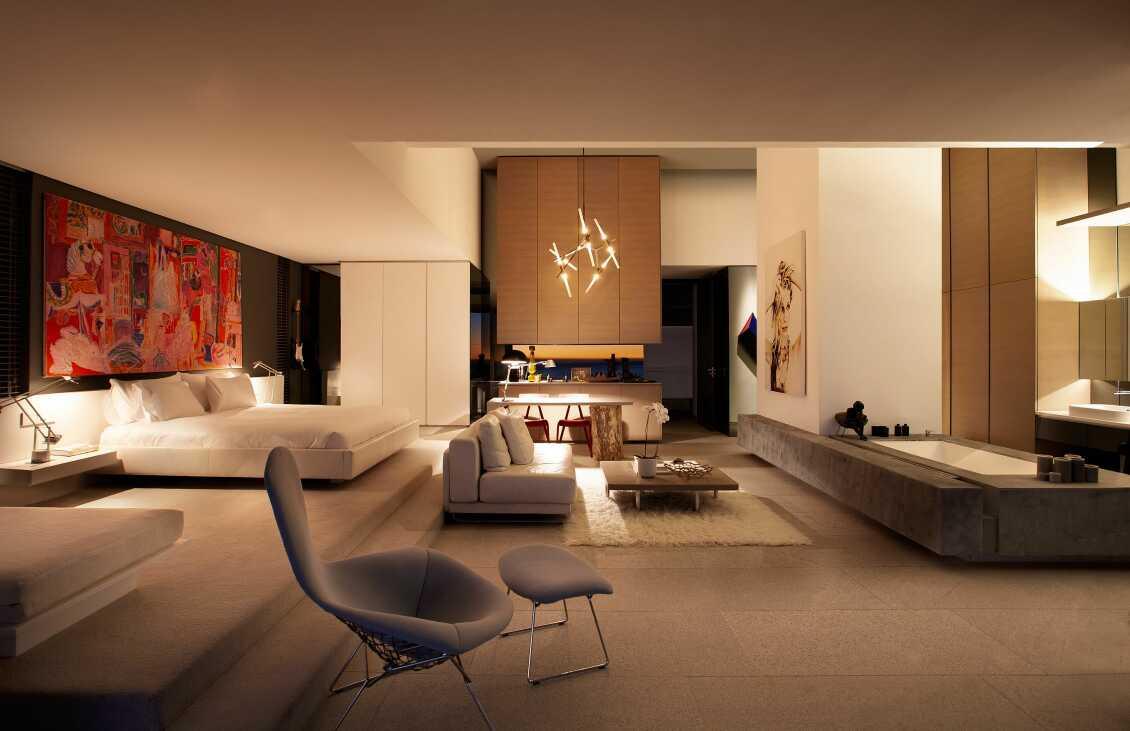
Creating anoasis in a small space
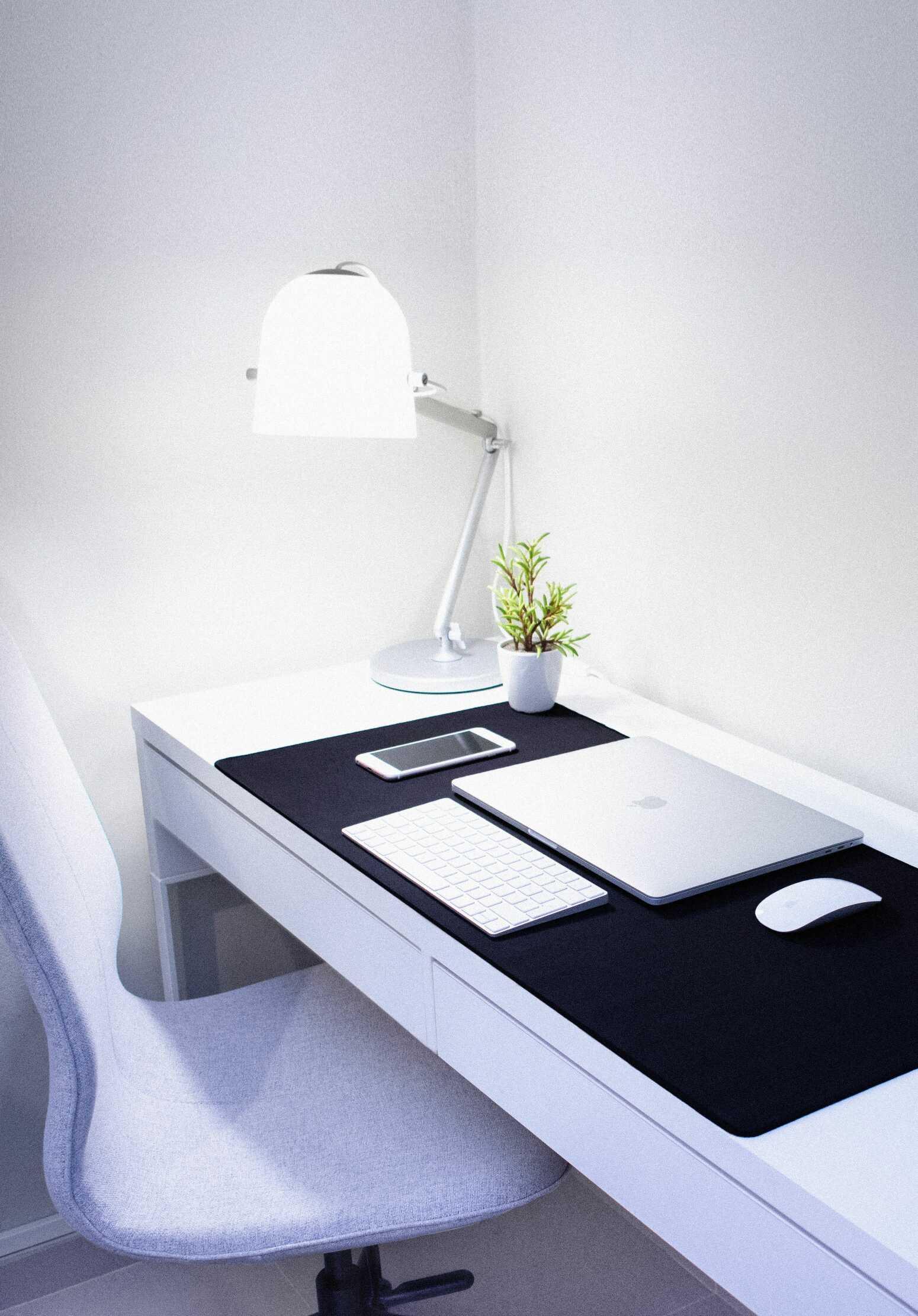
To make the best of a limited area, rein in your colour palette and try to keep things clean and tidy
EVERY design decision matters when space is limited, especially if you want to create a sense of calm. Interior designer Will Engelbrecht suggests you toss the cushions and keep the palette neutral. And he says because homes have become smaller there is an array of furniture now available that folds up or down or in to create space and hence calmness.
Here are some tips from Ina Baard, creator of Mother’s Love products and interior design fundi: • Keep visual clutter to a minimum. I decided to stick with a mainly black and white colour scheme in my small apartment to keep things calm, with pops of colour to make it feel warm. • Don’t underestimate the power of essential oils in your apartment. They create another layer of “decoration” and add to the sense of a homely space. • Plants add a layer of warmth. • A small space tends to get messy quickly. The good news is it can be quickly tidied again.
The most valuable tidying advice I ever got was to look for things that are not where they should be when you move between rooms.
For example, when I get up from the couch to go to the kitchen, I always check for cups and plates I can take with me. Also as I clean my flat and notice things are looking old and tired, chipped or outdated, I consider whether it is time to let go of them or fix them.
A sensual sanctity

Creating a master bathroom from scratch or renovating one can be an expensive exercise but you can provide an air of luxury and calm with accessories such as flowers, candles, good lighting and music
MASTER bathrooms have become a common place of respite, with trends toward personalisation and spainspired amenities in this room even more sumptuous than before.
For homeowners on a budget, an easy way to create bathroom serenity is with candles, fresh flowers, relaxing music and recessed lighting.
There is also a growing trend toward upholstered bathroom furniture, such as quilted chaises and tufted settees next to the bath, to add another tier of warmth and relaxation.
Embrace those curves
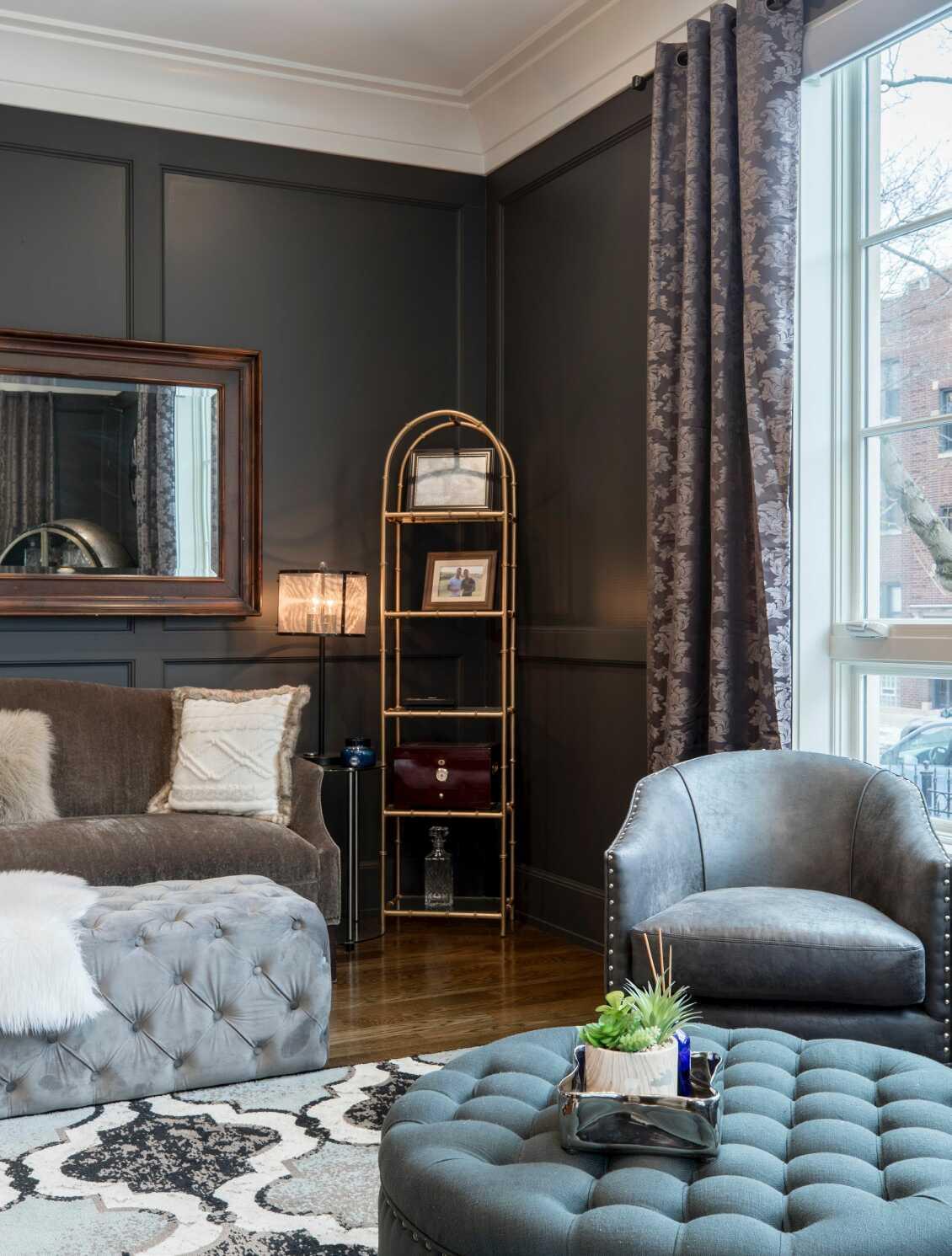
Soft, rounded shapes and ovals in interior design are better for our mental health than sharp angles, say environmental psychologists
MANY environmental psychology experts say sharp angles are more stimulating to the brain than round shapes or ovals, and that having too many rectilinear forms in a room can be stressful. “A room that’s entirely rectilinear – that’s a horror movie,” Sally Augustin, an environmental psychologist, told the Washington Post. Dak Kopec, who has written several books on the psychology of design, agrees: “Organic shapes tend to feel soothing.” A 2011 study found rounded, curvy furniture evokes feelings such as relaxation and hope more than rectangular furniture.
Calm in the kitchen How to bring peace to the very heart of the home
THE KITCHEN could in many ways be seen as the heart of your home.
It is the centre where food – nurturing, comforting, nourishing – is made and in its highest form is the place that keeps the household alive.
To bring peace to this part of the home may seem

almost impossible as it is often littered with dishes, groceries, homework, and bits of our everyday life, but it is possible. Psychologists, however, say it is important to choose one room in which the “messy” rules are relaxed – and the kitchen is perfect for this – in fact this might actually create calm.
SOME QUICK WAYS TO BRING CALM TO THE KITCHEN: • Declutter the surfaces – ensure you things while cooking and chopping. have a clean working space. • Consider a designated and • The sink is not the new cupboard – temporary space for clutter. it is not for storing things. Use • Colour matters, so think of a lick and wash. of paint to rejuvenate the area. Soft • Purge your pantry and fridge. Use and neutral colours have a calming your about-to-expire groceries first. effect and pastels can help here Start your own compost with food too. Consider also deep blues, light that would normally end up in the bin greens, greys and tans. – think banana peels, for instance. • Intersperse a hi-tech kitchen with • Include something green in the a few homemade objects that make room. Plant seeds and grow your you smile when you look at them. own herbs. • Give your kitchen a rest. As • Position items handily, so you don’t summer approaches, think about have to be scrambling around to find doing more outdoor cooking.
Scents of summer
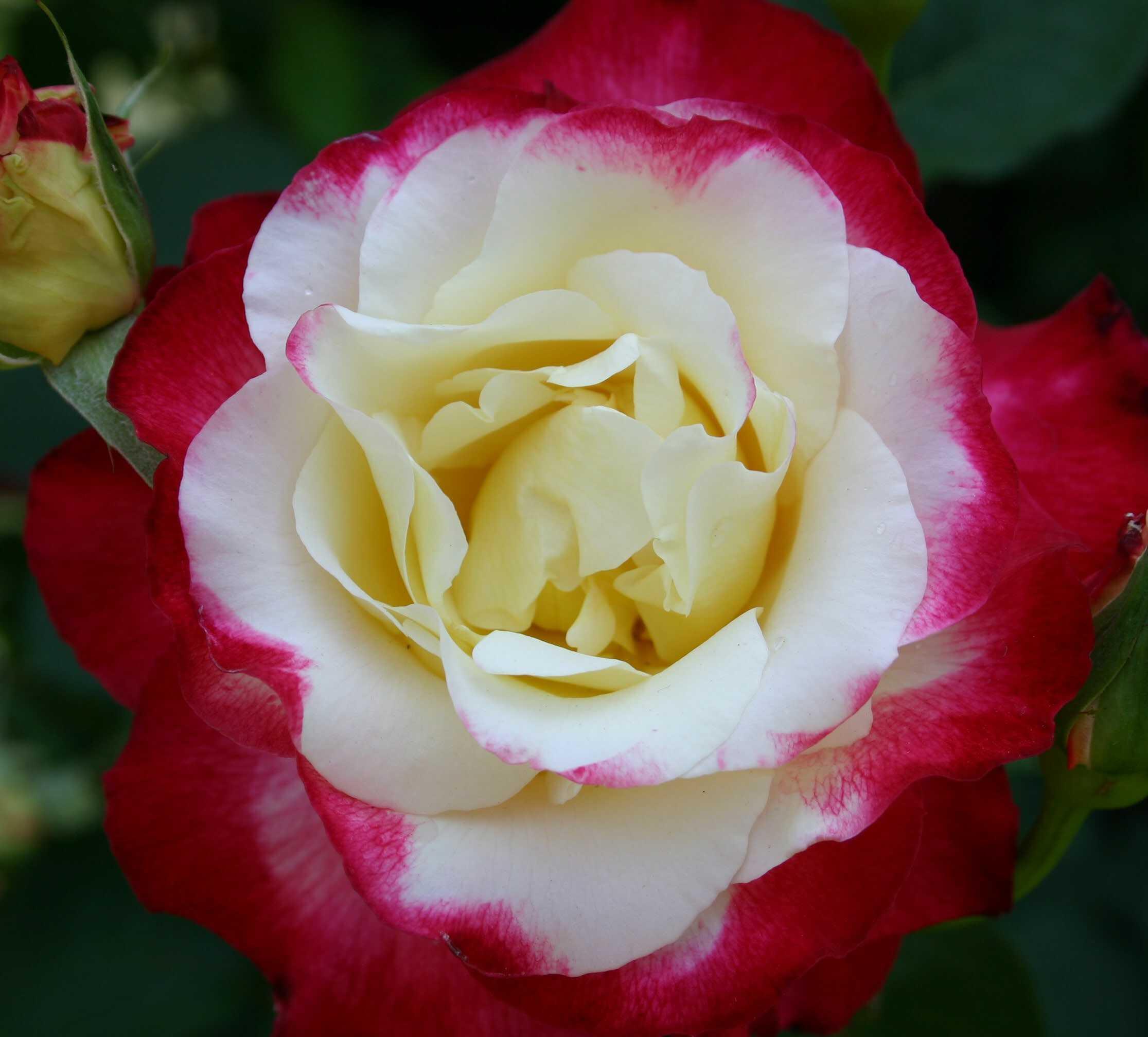
WORDS KA Y MONTGOMER Y
Design your garden for the fragrances that encourage you to linger in the garden, and not just for colour and visual appeal
SOME plants spread their scents far and wide, others are fragrant at certain times of the day or evening, recalling memories.
The scents we love are not only to pleasure us, of course, but to attract pollinators.
“Scents bring memories and memories bring nostalgic pleasure,” wrote gardening expert Thalassa Cruso.
The deaf and blind wise woman Helen Keller described the sense of smell as that of “a fallen angel” – for scent is intangible and subtle.
It is difficult to describe scent, as each person perceives and reacts to it differently. And while it can have a calming, stimulating or refreshing effect on one person, it may cause a different reaction in others.
Some scents can dominate those with more delicate perfume. Too many scents in one place can be overpowering, so scented plants are best spread around the garden. Use non-fragrant plants to intermingle with scented varieties.
Place scented flowers and foliage at the entrance to the garden, near windows and doors and along pathways. Position containers of scented plants near entrances to welcome visitors and beneath windows to let the perfume drift indoors.
Pots of scented flowers on patios and near seating areas add to the enjoyment of sitting outside.
The beautiful red and yellow rose ‘Double Delight’ produces highly perfumed blooms with a spicy, citrus scent.
The sweetly scented white flowers of the gardenia (Gardenia augusta) are a delight of the summer garden.
PICTURE
LUKAS OTTO)
Often the name of a rose will tell you if it is richly scented or not, such as ‘Fragrant Cloud’
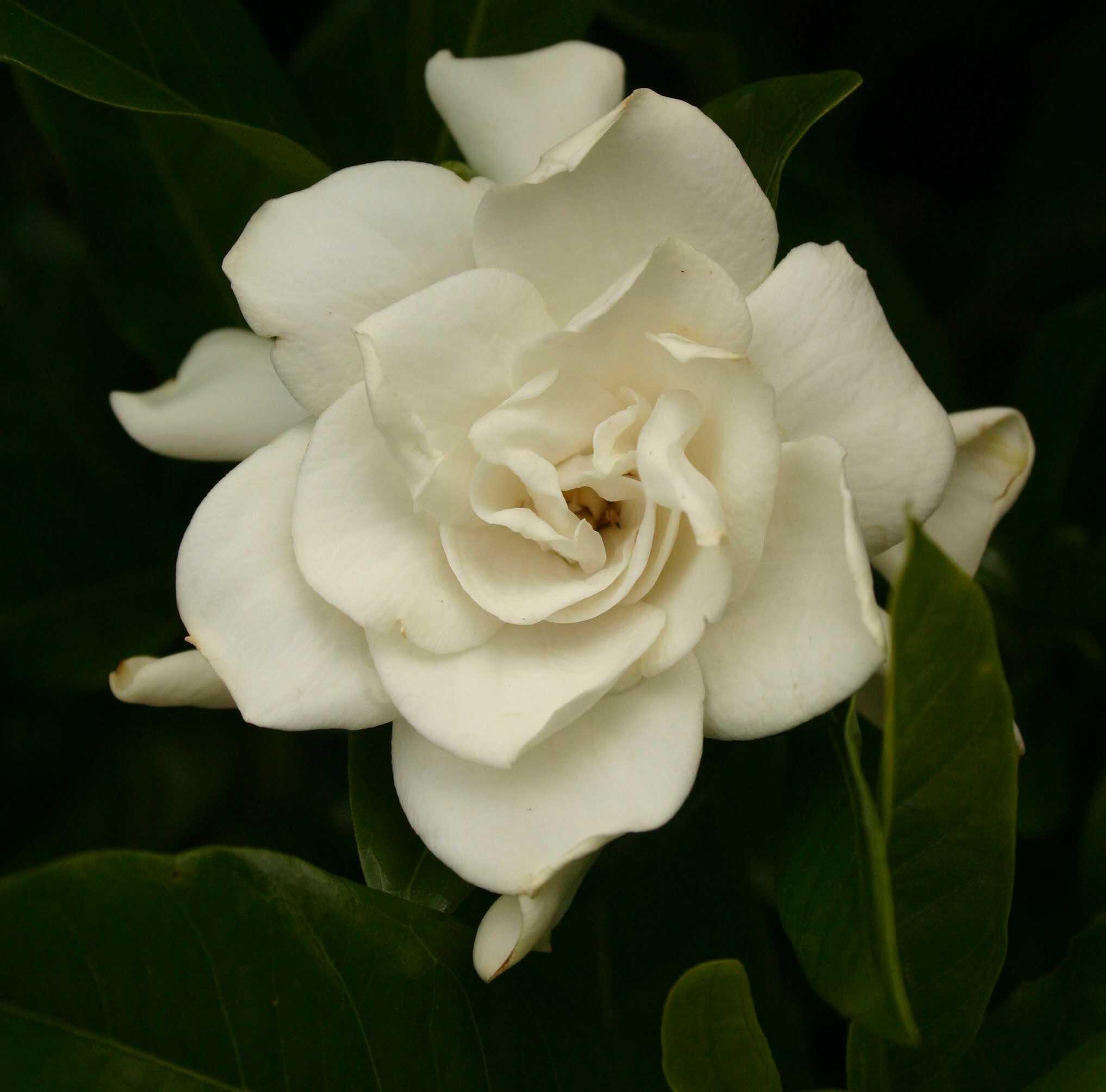
FAVOURITE SUMMER SCENTS
Roses: Bourbon rose “Mme Isaac Pereire” has richly scented magenta-pink flowers, fragrant “Mme Alfred Carriere” has clusters of white-flushed, softpink blooms.
Hybrid musk roses are known for their fragrance. “Felicia” has clusters of silvery-pink flowers and “Penelope” has trusses of scented white flowers.
Englishman David Austin bred roses that combined the charm and rich fragrance of old roses with the colour range and repeat-flowering of modern roses. “Sharifa Asma” is citrus scented, “Clare Austin” myrrh, “The Lady Gardener” tea and vanilla.
Some rose names will tell you which are richly scented – “Addictive Allure”, “Perfume Passion”, “Dermalogica Passion”, “Scentsational”, “Sheila’s Perfume” and “Fragrant Cloud”. Gardenia: The buds of gardenias open into satiny white flowers with an exotic scent.
Gardenia augusta from China and Japan has dark green shiny leaves and waxy white flowers and cultivar “Florida” has double white flowers.
Compact growing “Radicans” is ideal for pot culture.
Gardenias need moist, acid soil, good air circulation and morning sun.
Star jasmine (Trachelospermum jasminoides) from China is not a jasmine species but is named so because of its starry white flowers and scent.
At the end of a busy day, sit in the twilight garden and enjoy the night fragrances

THE EVENING GARDEN
Fragrance plays an important role in an evening garden, where scents drift on to patios and through open windows.
Lilies are a favourite for their elegant flowers and for their strong perfume.
White flowers often attract night-time pollinators, not only because they are visible in the dark but also if their blooms are scented.
Indigenous orchid Mystacidium capense is an epiphytic (tree) orchid with dainty arching sprays of scented white flowers.
For semi-shade and for beautiful twilight gardens try growing the tall tobacco plant (Nicotiana alata) with tubular white flowers.
Along with that, plant the metre-high woodland tobacco (N sylvestris) with long white tubular white flowers, both with an evening scent.
More evening scents include the dainty lilac stock (Matthiola bicornis), tuberose and hosta.
SCENTED FOLIAGE
For year-round scent and attractive silver-grey foliage, there is nothing better than lavender species and cultivars and lavender-scented santolina with finely cut leaves of silvery grey to edge a path or border.
Scented geraniums (pelargoniums) are grown for their attractive leaf shapes and scents, such as lemon, orange, rose, peppermint, nutmeg and balsam, which release their scent when crushed.
The white flowers of the indigenous orchid (Mystacidium capense) are highly scented at night and believed to be pollinated by moths.
PICTURE
LUKAS OTTO
Stepping into nature
The outdoors restores energy and mood, so cultivate yours
SIMPLY stepping into nature can restore your physical and mental energy, says Carolyn Rickard-Brideau, who studies building standards which affect well-being, citing a 1989 study.
If your patio or balcony is virtually unused, ask why. If it’s simply a matter of making it functional by adding furniture or floor tiles, it could be worth the investment.
Psychologists suggest spending time outdoors in the morning because early, fullspectrum sunlight helps regulate serotonin.









